When we moved to Muleshoe in 1980, King Feedyard would grace the area with a rather pungent scent after it rained and the wind was blowing from the southwest. I grew up surrounded by rice and cotton fields and cattle in the pasture, but not close to a feedyard. I had seen them from a distance, but was not knowledgeable about them. After we moved here, we met the extended King family and their employees at King Grain. I taught their kids. Later I wrote a story about the family for this blog. King Feedyard has gone through some changes and ownership since then, but the feedyard remains an important agricultural business here. When it is dry and the cattle stir up the dust, it still clouds the air on occasion and still produces a distinctive odor when the area is blessed with rain. But other than that, what do most of us really know about a feedyard? Do we even realize that most of the beef we eat comes from cattle fed in a feedyard? I learned there is quite a bit of history behind feedyards and a whole lot more to running one than most of us know.
In 1960 Harold D. King built King Feed Yard with a capacity to feed 12,000 head of cattle. In 1968 that number rose to 25,000 head. The focus of the feedyard, or perhaps a nice side effect, was to provide a market for milo processed at King Grain. In fact, having a market for milo grown in the High Plains was one of the main reasons many feedyards popped up in this area. In 1992 Louis Reeder bought the feedyard, and named it Wes Tex Feedyards. And then in 2011, Frontera purchased the feedyard and these days, feed and finish an average of 30,000 head of cattle in a year.
Sam Stevenson and his wife Tanya came in 2013 from Canadian to run the place, and they graciously shared their time to educate me about feedyards.
Besides visiting with me about the operation and Tanya taking me on a tour of the yard, Sam sent me home with a book, The Finishing Touch, by Charles E. Ball. The book is about the history of feedyards and the Texas Cattle Feeders Association, which was founded in 1967 as a division of the Texas and Southwestern Cattle Raisers Association, which goes all the way back to 1877. The TCFA came about as feedyards expanded and a network of support and information was needed.
TCFA was based in Texas for Texas feedyards, but over the years New Mexico and Oklahoma yards were also allowed membership. The book was written in 1992, and at that time, 177 feedyards were members of the association, 147 located in Texas and 30 from New Mexico and Oklahoma. I didn’t count the number of feedyards just in the High Plains, but it was the great majority of them. While the rest of us lament the lack of rain, that lack of rain helps the yards because the cattle aren’t always standing in water and mud. While the number of yards may have gone down, the number of cattle each one feeds has gone up.
I think we take feedyards for granted and don’t think about what came before them. In his book, Mr. Ball talked about aspects of feedyard history I had not known or thought about. Consider that in early Texas, first came the explorers. Eventually ranchers used the land for free grazing. Then farmers came and broke sod and produced crops that could be fed to humans and cattle, after which cattle feeders combined cattle with the crops in their feedyards. There the cattle were fed and finished and sent to urban packing plants in the East. Cattle drives once delivered cattle to the markets in places like Chicago, but then came the railroads and cattle trucks to take that meat on the hoof to the packing plants. Later, refrigeration allowed the processed meat to be shipped everywhere.
I also found it interesting that from the start, feedyards have been a place to utilize feedstuffs from other endeavors. In the 1850s when the first cottonseed oil mills were built, their by-products of meal and hulls became feed for cattle. By 1895, Texas had eighty-four cottonseed oil mills. By the 1900s, oil mills didn’t run feedyards, but would furnish the feed to the cattlemen who would rent pens and care for their own cattle and feed that surplus meal and hulls. Sugar mills and whisky distilleries also sent their by-products to feedyards. Turnips, rutabagas, beets, sweet potato vines, and cowpeas have also been used as feedstuffs for feedyard cattle.
Currently corn is the main staple grain at Frontera and other feedyards, and most of it is brought in by rail as less corn is grown in the High Plains. As mentioned, the High Plains weather is perfect for feedyards; the Midwest is too cold and wet for feedyards but is perfect for growing the corn to feed the cattle in those feedyards. Milo was grown on the High Plains and was fed to the cattle, but corn helps cattle yield more meat. Flaking the feed improves feeding efficiency. What Frontera feeds now is a high corn-based diet plus ground hay, distiller’s grain from ethanol production, wheat silage, and a liquid protein supplement. Cattle are fed twice a day and have a constant supply of fresh water. Genetic improvements on the breeding of cattle contribute to increased growth. English crosses of Angus, Hereford, Charolais, Limousine, and now dairy-crossed cattle provide genetics to improve the conformation and growth potential of feedyard cattle, so feedyards are seeing more dairy/beef crossbred cattle.
Frontera is a custom feedyard, which means that ranchers, farmers, or just investors who want to own cattle place their cattle in Fronter’s care. Frontera takes the feeder calf and feeds it until it is fat and ready for market. The cattle owner pays Frontera for the feed and care, Frontera sells the cattle when they are finished as a service to the owner and then pays the owner the appropriate amount of that purchase. Frontera sells finished fat cattle to Tyson, Cargill, JBS, STX, National Packing Plant, and South Texas Beef, all large packing houses.
Feed is mixed and prepared and flaked on site in the mill. While appropriate feeding began with King Feedyards with milo back in the early days, Louis Reeder insightfully designed Wes Tex Feedyard so that much of his designs are still in use today. And as time goes by, Frontera is also updating with new technologies as they become available.
What people see from the highway as they pass a feedyard is the mounds of manure the cattle are standing on. Those piles of poop do provide the cattle a way to get out of the standing water and mud when we finally get rain, which improves health and efficiency. The pens are cleaned out twice a year, ideally when that batch of cattle is shipped out and before a new bunch is brought in.
Tanya said 5,183 tons of manure left the yard in 2024. Manure can be spread on fields as it comes out of the feedyard, but nutrients in composted manure are available sooner for the soil and plants to use. South Plains Compost takes the raw manure and properly composts it to sell to farmers. Part of that process is using feedyard waste water to compost it correctly. Then any leftover water is used to water the feedyard crops you see in the aerial photo.
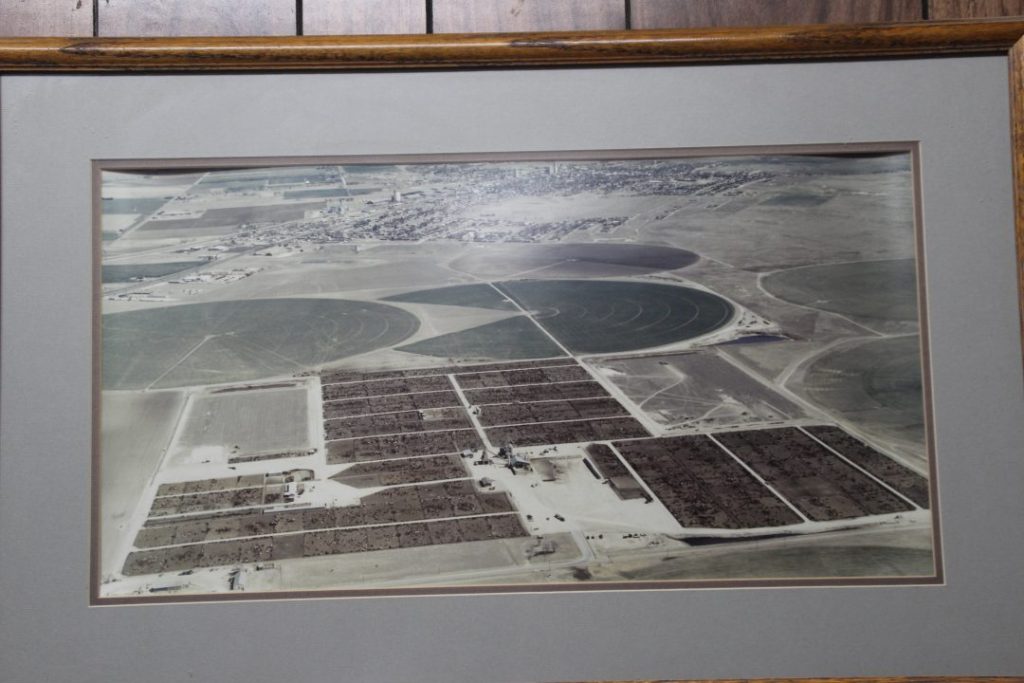
Seven cowboys ride the pens everyday checking the cattle. They make sure the water is available and that everything is as it should be in each pen of cattle. Some of the cowboys are from Mexico and are here on a TN visa. They have earned a technical degree that would be comparable to a master’s degree here, and in Mexico would qualify them as a veterinarian. Frontera also has employees that have received a feedyard technician certification through TCTA’s feedyard technician program that trains high school students in animal handling and safely equipment. The cowboy house is the original building still in use from King Feedyard that serves as a cowboy break room and is next to the horse pens. Back in those King Feedyard days, the cowboy break house also served as the office of Joe Rhodes, who took care of sheep when they were fed there and started selling boots to the cowboys and others who came to the feedyard.
This building and pens is where incoming cattle are processed, given new ear tags, vaccinated, examined, and made ready for their stay at the feedyard.
As we drove around the pens, I was reminded of what a large animals cattle really are! It’s been a while since I have been up close and personal to a well-fed steer or heifer and had forgotten their impressive size. A finished steer will weigh over 1400 pounds and a heifer will weigh up to 1300 pounds. These animals were slick, fat, and healthy. Black cattle were in the majority,
But there were others that were purebreds and cattle of different genetic crosses.
A pen of Brahams watched us as we drove past. They are here for a study by a Texas A&M AgriLife Extension Office in South Texas for their usefulness in overall production for pasture and/or feedyards in southern climates.
Sam talked about when Frontera acquired the feedyard. Several Wes Tex owners were involved, one of whom many of you knew, Bob Clark. Sam laughed and grinned. “I didn’t know when I came here that I inherited Bob! He was a part of this yard from so early (even going back to King Feedyard). He was always here! He always wanted to help. During the winter storm Goliath, he got here as quick as roads were open. He ended up taking Clayton, Emma, and Jenna (Sam’s kids) to lunch at McDonald’s.”
Sam said Bob would have 900-1000 cattle and would eventually take them to Johnny Trotter in Hereford. Some of those cattle would be open heifers that wound up calving. He would give the calves to Sam’s then elementary-aged kids, who would bottle feed them and then sell them, making enough money to pay for a semester of college each. Johnny Trotter gives a scholarship through West Texas A&M University in Canyon for kids interested in ag-related careers, particularly in feedyards. Sam’s daughter, Emma, won one of the scholarships, and in her thank you note to Mr. Trotter for the scholarship, Sam insisted she credited Bob Clark for getting her started. In the note, she told how the calves he gave them helped her earn money and said, “Bob showed me not only how to work in agriculture, but also the generosity of people who are in agriculture.”
Now, if a steer or heifer comes in at 300 pounds and is fed for a year, which is the usual time span, the yard gets it up to anywhere from 900 to 1500 pounds. The average consumer eats 55 pounds of beef a year. Sam said, “Take what we produce in this yard, and it will feed over 600,000 people for their yearly needs. What people don’t know driving down the highway is the scope of what we do.”
Despite some of the myths circulating about beef sustainability, a 2019 study shows that beef production and the production of animal feed is responsible for only 3.3% of greenhouse gas emissions in the U.S. Cattle only consume 2.6 pounds of grain per pound of beef. Nearly 90% of grain-finished cattle feed, mostly corn, is inedible by humans and is fed to cattle, so it is not wasted or denied to people. Corn fed to beef cattle represents only 10% of harvested corn in the U.S. It takes 308 gallons of water to produce a pound of boneless beef, and water used by beef is around 5% of U.S. water withdrawals and the water is recycled. So, if you like beef, don’t feel guilty about eating it. At least not for these myths.
Sam heard Bob Clark once say, “If I found a bag of a million dollars, guess I wouldn’t do anything different.”
Sam smiled, ” He was content. He was doing just what he was supposed to be doing.”
I suspect that might describe others at Frontera Feedyard. Just appreciate them when you enjoy that next juicy, tender steak, or any other cut of beef that cowboys on cattle drives or diners in Chicago would never have had the pleasure of tasting back in the day.
A big thanks to Sam and Tanya Stevenson and Emma Stevenson for all their help with this story.
Ball, Charles E. The Finishing Touch, a History of the Texas Cattle Feeders Association and Cattle Feeding in the Southwest . Amarillo: Texas Cattle Feeders Association, 1992.
Fenton, Carmen, “U.S.Beef is Sustainable. Science Says So.” Cattle Feeders Resource Guide 2019: 150-151.

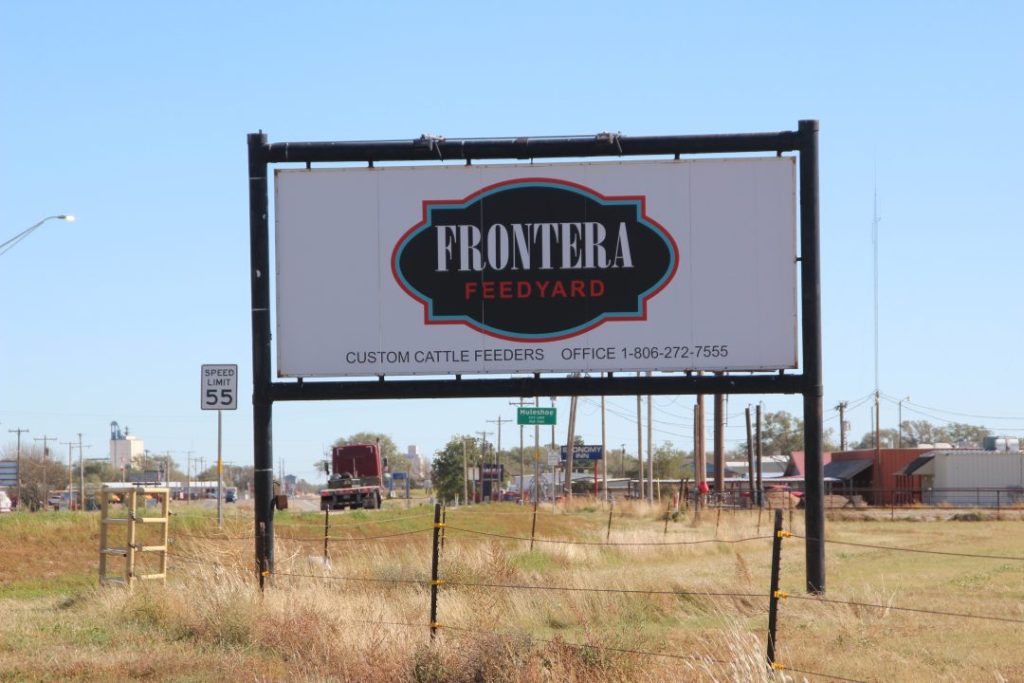
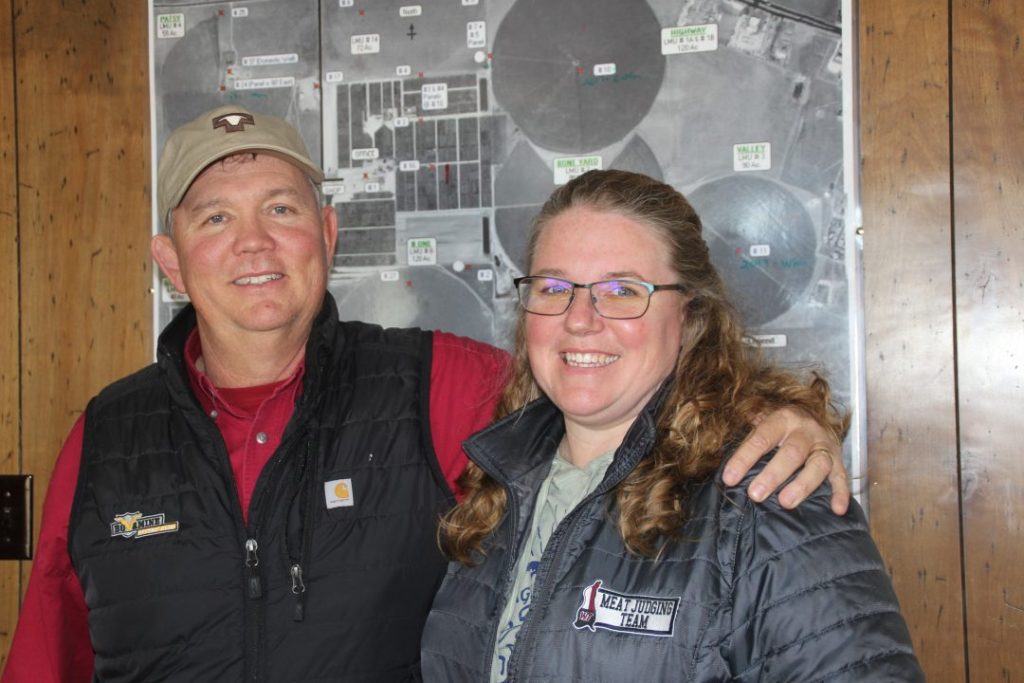
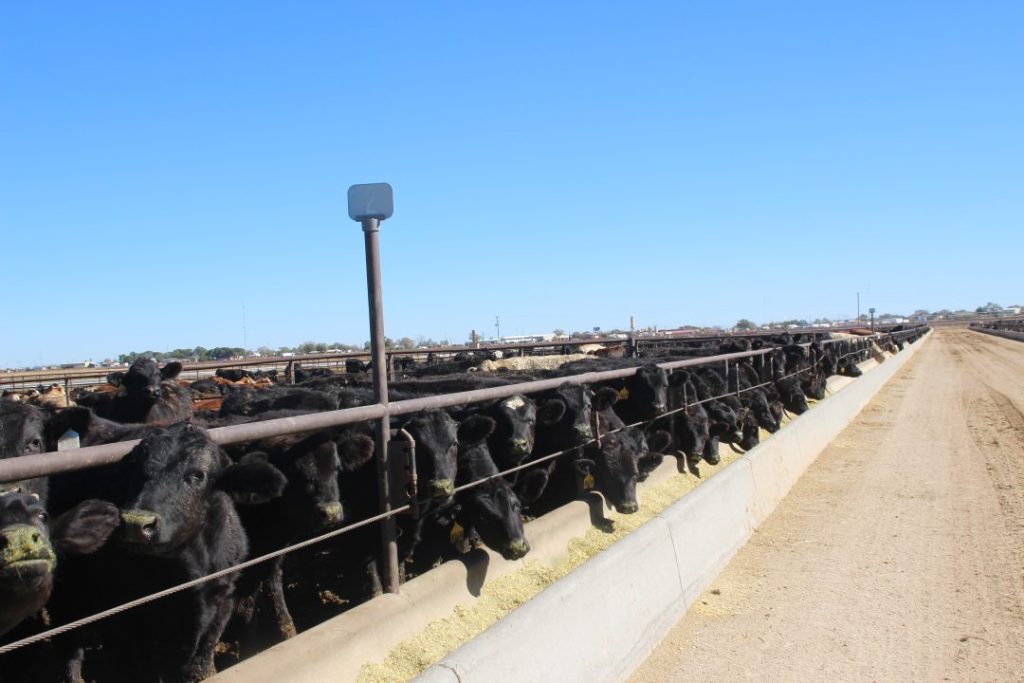
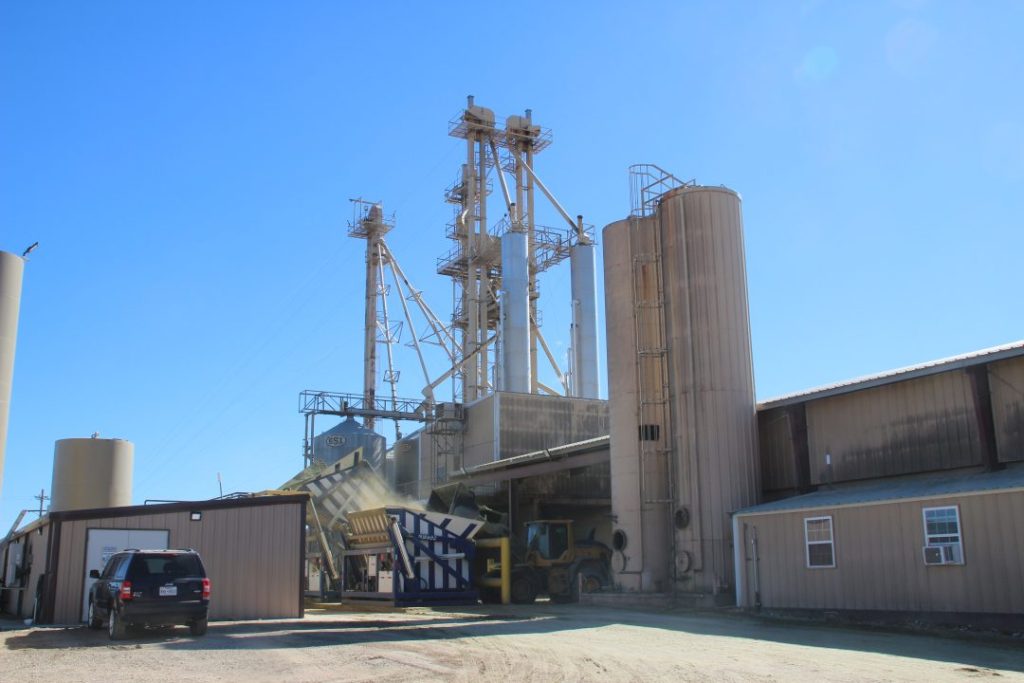
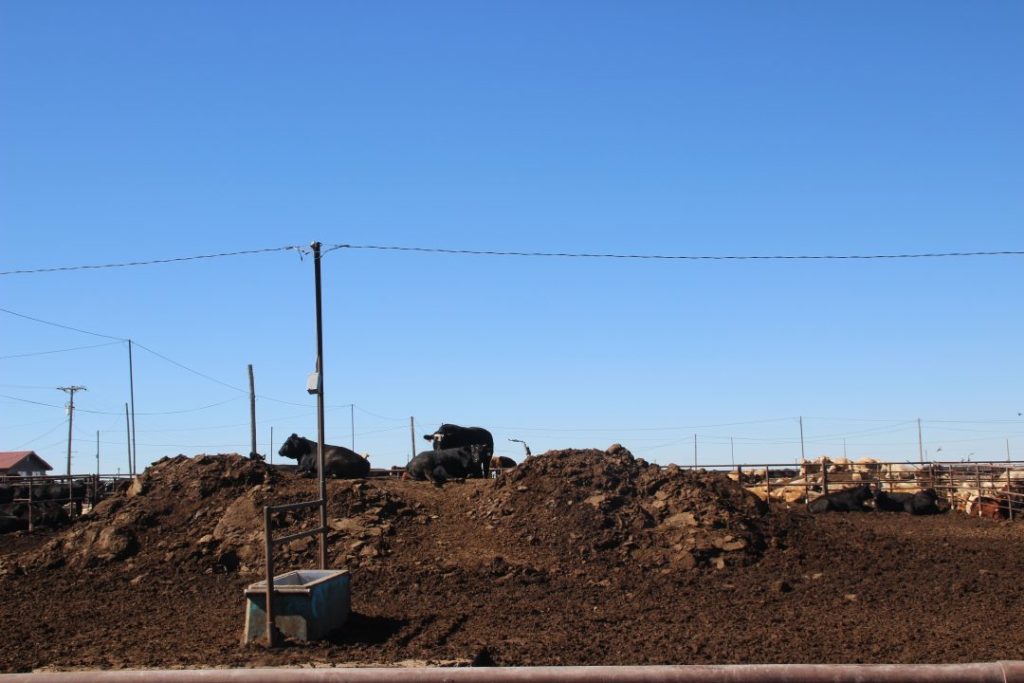
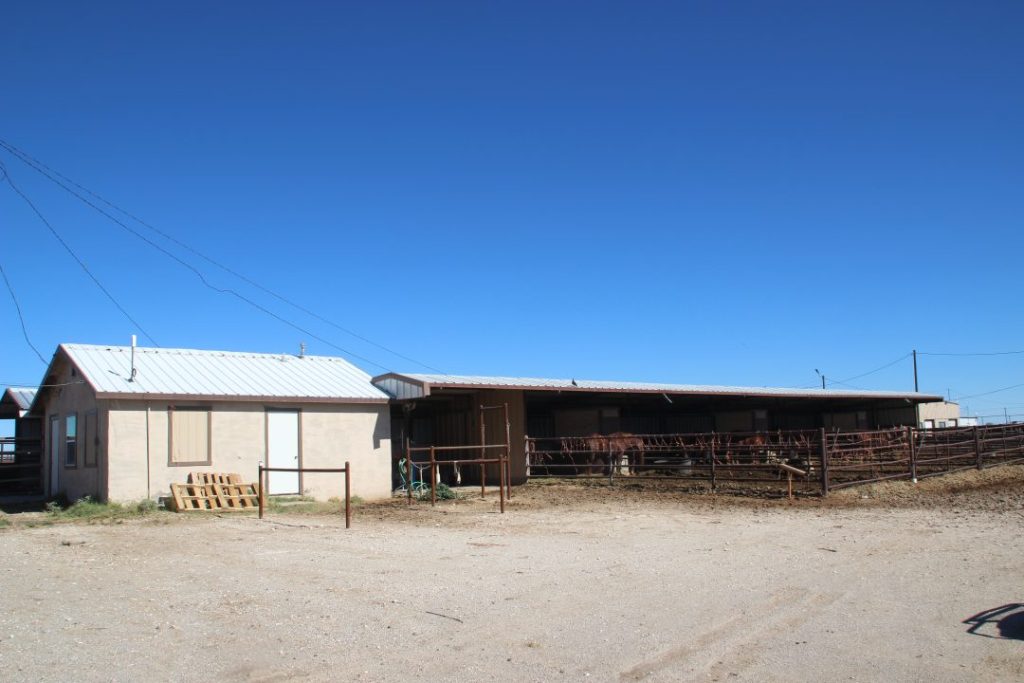
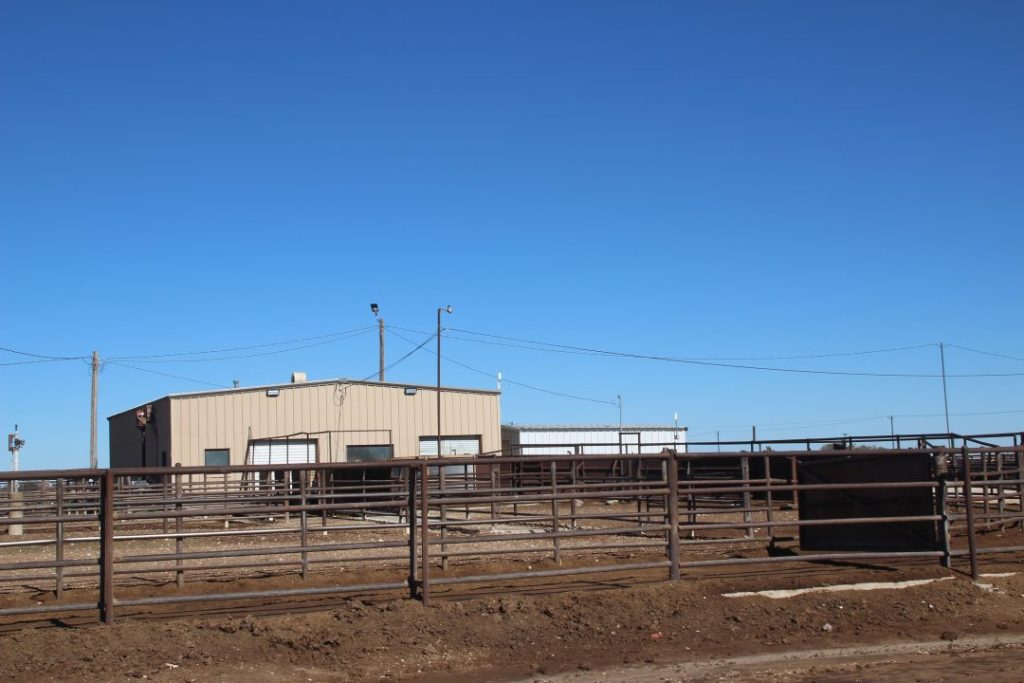
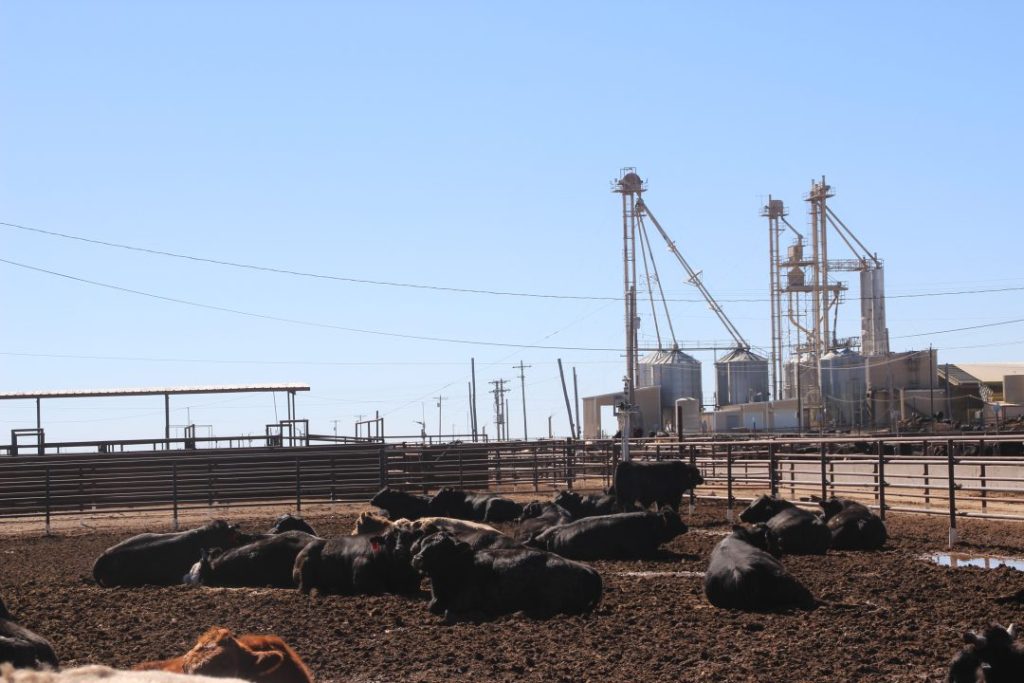
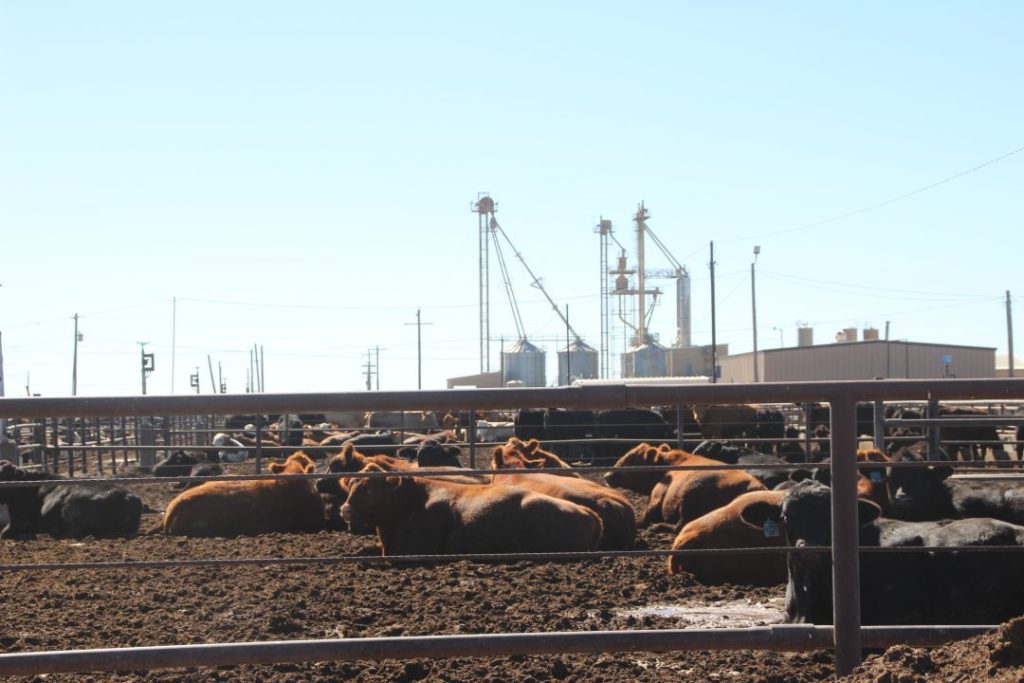
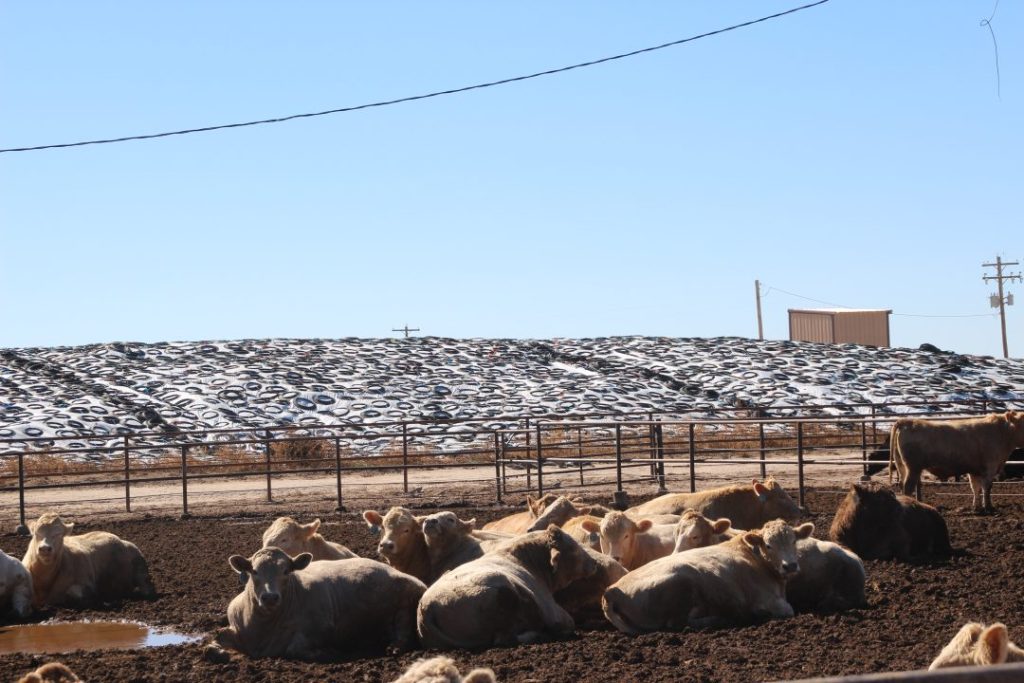
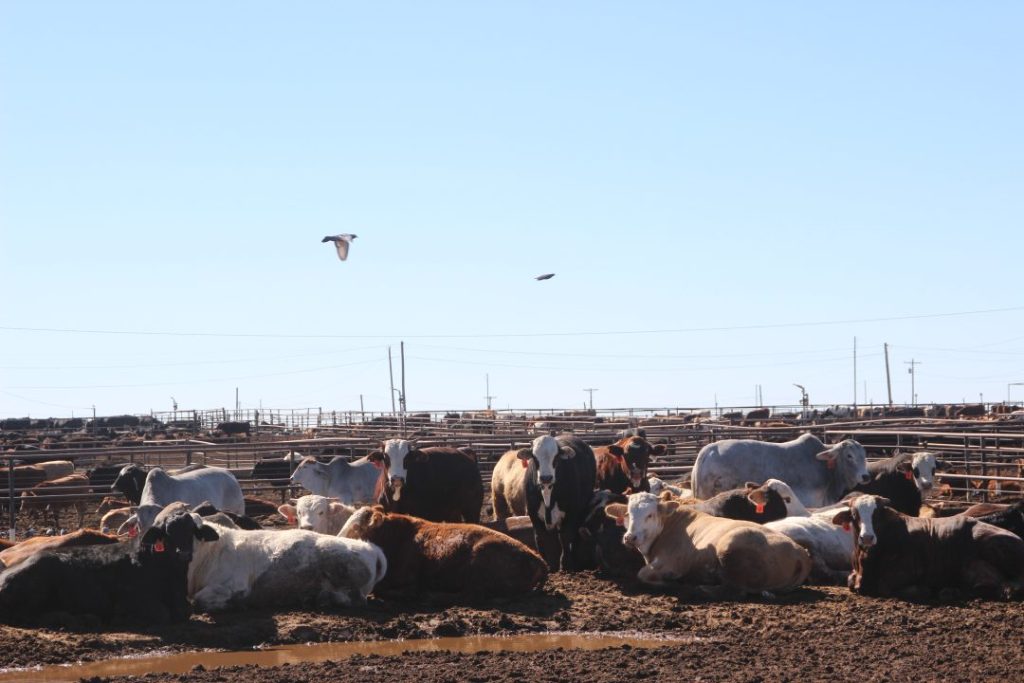
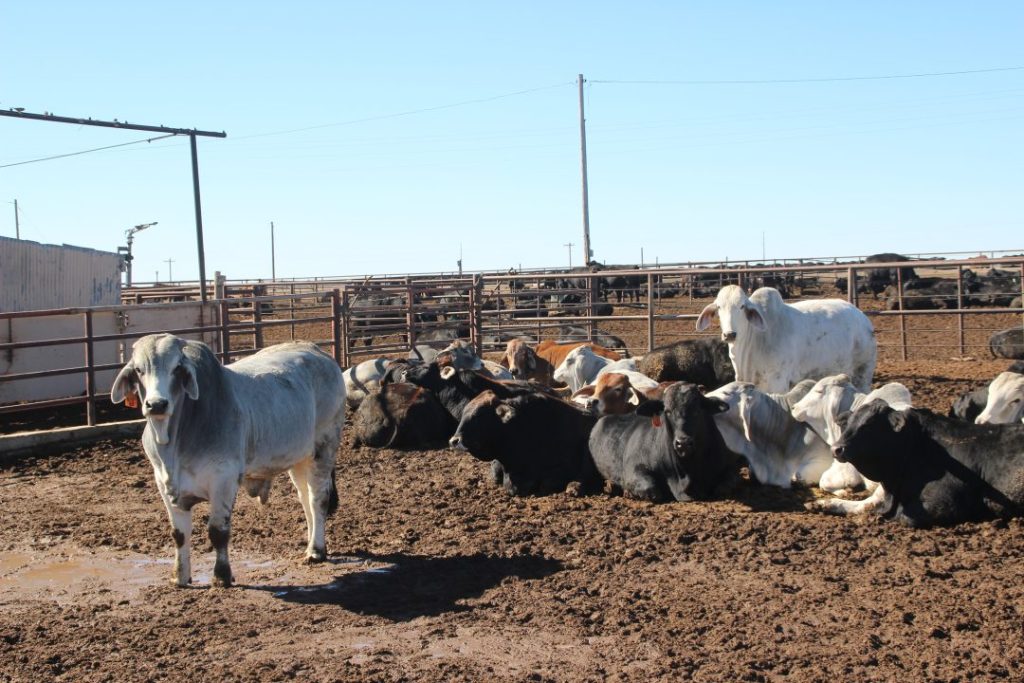
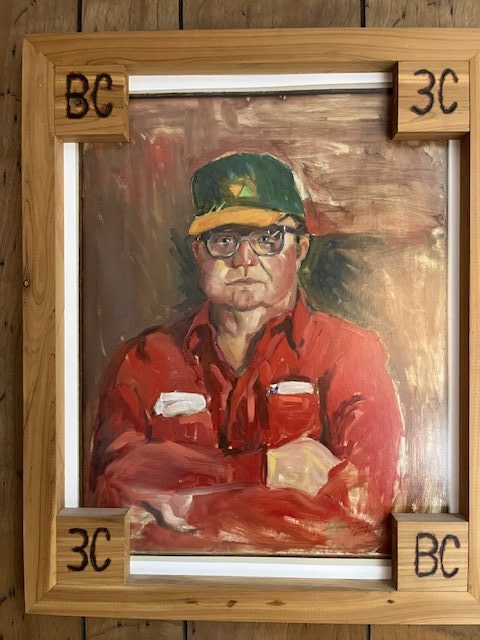
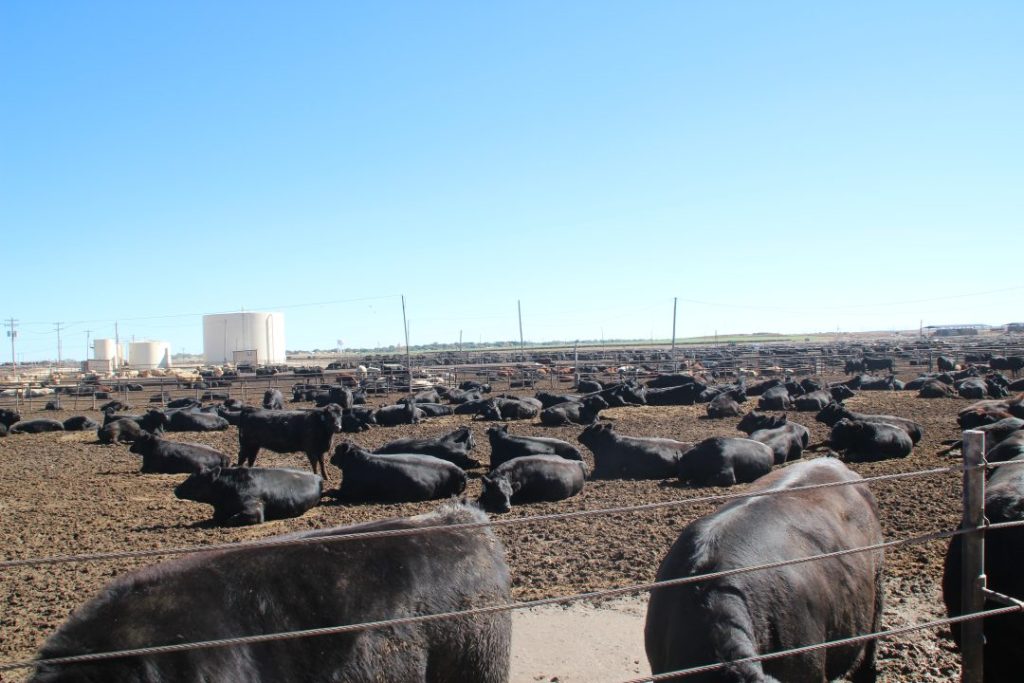
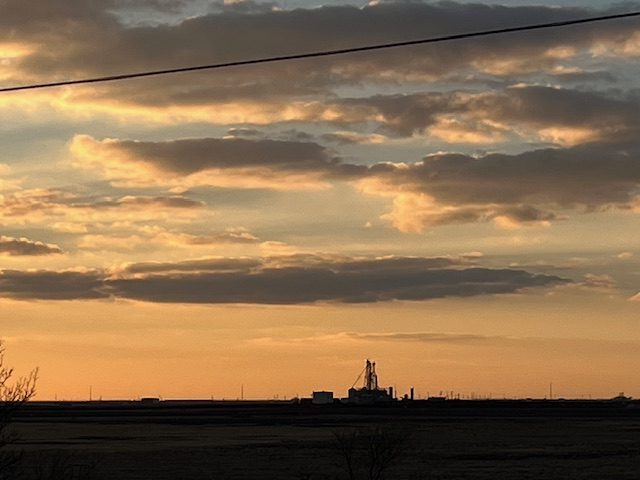
Bob Clark was a major part in my raising.
I think he was a major positive influence on many people. And one of a kind! I wanted to do his story, but was told he probably wouldn’t want to do it. So at least I found a way to tell part of his story and connect him to an important part of his life.
My formative years were spent In that feedlot. Learned to work hard in the heat and the cold. Bob Clark was a great influence on me. Thank you Alice
You are welcome, Brett. I learned about Bob Clark myself while doing the article.
Thanks for this informative article. I will never complain about the odor again.
I learned a lot just writing the article.